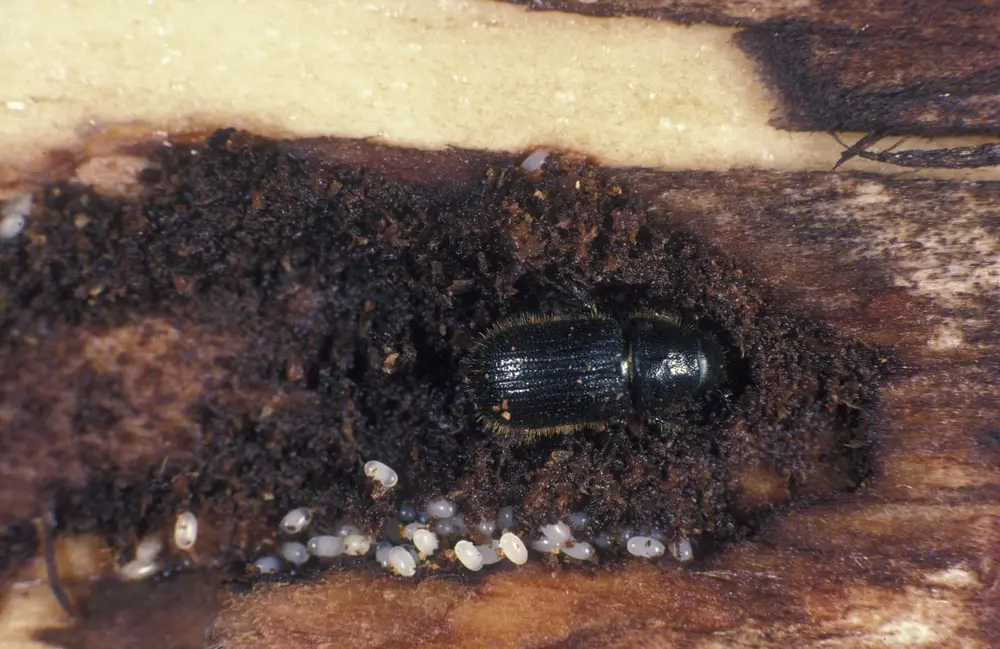Great spruce bark beetle
Great spruce bark beetle

Adult beetle with eggs
Dendroctonus micans
The great spruce bark beetle or D. micans is a common non-native pest that preys mainly on spruce trees in Britain. It was first discovered in England in 1982 and, as of 2011, has made its way to Scotland. It’s mainly located in south Scotland and some central areas from where it is slowly spreading north.
The beetle tunnels into the bark of living trees to lay its eggs. The larvae then feed and develop, forming galleries that weaken or kill parts of the tree. If it is not managed, up to 20% of the trees in the forest can die.

D. micans damage showing the great spruce bark beetle boring into the tree.
How we manage D. micans
Norway and Sitka spruce are the primary hosts of this pest. Monitoring the spread of this pest is a high priority for us as these are our main timber species. Our focus is to slow the spread of the pest through good biosecurity practices during the movement of timber. This is especially important in the west coast where D. micans has not been recorded.
We also use a biological control method that can help control the beetle impact to below 1%. This is through the use of a predator beetle which is released on to infected sites.
We monitor for D. micans bi-annually through aerial surveys by Scottish Forestry. We also rely on local observations reported by our staff and our Tree Health Champions.
Learn more about the great spruce bark beetle in Scotland on the Scottish Forestry website.